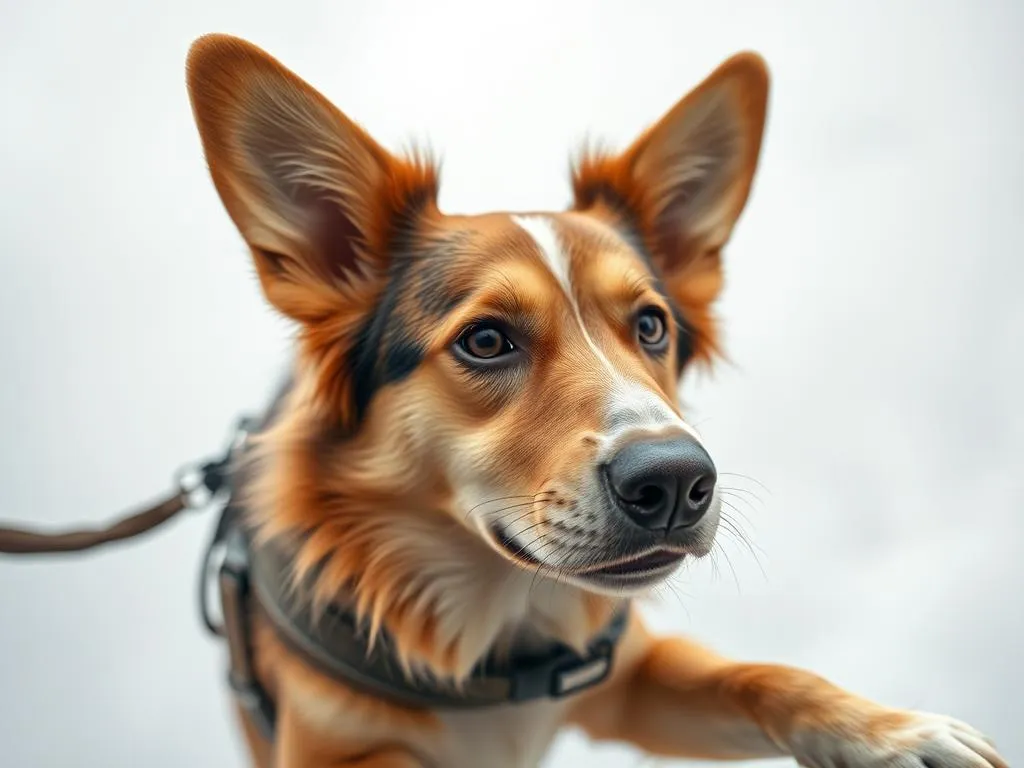
Introduction
Traveling can be a stressful experience, and for many, the presence of a furry friend can provide the comfort and support needed to alleviate anxiety. Emotional support dogs (ESAs) play a vital role in enhancing the emotional well-being of their owners, particularly during travel.
Definition of Emotional Support Animals (ESAs)
An emotional support dog is a pet that provides comfort and emotional stability to its owner. Unlike service animals, which are specifically trained to perform tasks for individuals with disabilities, ESAs offer companionship and support without specialized training. This distinction is crucial, as it influences the regulations surrounding travel with these animals.
Importance of Emotional Support Dogs
The benefits of having an ESA, especially during travel, cannot be overstated. Individuals may experience heightened anxiety, panic attacks, or other emotional challenges when away from home. An emotional support dog can help mitigate these feelings, providing a sense of safety and emotional grounding. This article aims to educate readers on the guidelines, tips, and regulations for flying with an emotional support dog.
Understanding the Regulations
Airline Policies on Emotional Support Dogs
When planning to travel with an ESA, it’s essential to understand the various airline policies, as they can differ significantly. Major airlines like American Airlines, Delta, and United have established specific rules regarding ESAs.
- American Airlines: Allows ESAs but requires a completed form submitted 48 hours before departure.
- Delta Airlines: Previously had a more lenient policy, but has tightened regulations, now requiring documentation similar to that of American Airlines.
- United Airlines: Requires a similar process, emphasizing the need for documentation.
Each airline may have different requirements regarding the size, breed, and behavior of the ESA, so it is crucial to check with the specific airline prior to booking.
Legal Considerations
The Air Carrier Access Act (ACAA) is a critical regulation that protects the rights of individuals traveling with ESAs. Under this act, airlines are required to accommodate passengers with disabilities, which includes those traveling with emotional support dogs. However, in recent years, some airlines have begun to impose stricter regulations, reflecting the need for documentation and proof of the animal’s training.
Additionally, the Fair Housing Act (FHA) is relevant for individuals seeking housing with their ESAs. This act allows individuals with emotional support animals to live with their pets in housing that may otherwise prohibit animals, ensuring they receive the necessary support in their living environment.
Documentation Requirements
To fly with an emotional support dog, specific documentation is required. This typically includes:
- A letter from a licensed mental health professional stating the need for an ESA.
- Proof of current vaccinations and a health certificate for the dog.
Having these documents readily available can help streamline the check-in process and avoid any potential issues at the airport.
Preparing for Travel
Training Your Emotional Support Dog
Before embarking on your journey, proper training and socialization of your emotional support dog are essential. Here are some tips to consider:
- Basic Training: Ensure your dog is familiar with basic commands such as sit, stay, and come. This will help maintain control during travel.
- Socialization: Expose your ESA to various environments, sounds, and people to reduce anxiety during the flight and in crowded areas.
Behavior training for public settings is critical, as it prepares your dog to remain calm and composed in unfamiliar surroundings.
Choosing the Right Travel Gear
Selecting the appropriate travel gear is vital for the comfort and safety of both you and your dog. Recommended items include:
- Comfortable Harnesses: A well-fitted harness can keep your dog secure and comfortable during the flight.
- Travel Carriers: Choose a carrier that complies with airline regulations and is spacious enough for your dog to stand, turn around, and lie down.
- Travel Bowls: Collapsible bowls are perfect for providing food and water during layovers or before boarding.
Ensuring your ESA is comfortable during the flight is paramount for a stress-free experience.
Packing Essentials for Your ESA
When traveling with an emotional support dog, packing the right essentials is crucial. Consider including:
- Food and Water: Bring enough supplies for the duration of your trip, including a portable water bowl.
- Medications: If your dog requires any medications, ensure you have sufficient supplies for the entire journey.
- Travel-Friendly Treats: Consider options that are easy to carry and won’t upset your dog’s stomach during travel.
Creating a checklist of items can help ensure you don’t forget anything essential for your furry friend.
Booking Your Flight
How to Inform the Airline
Once you’ve prepared for your journey with your emotional support dog, the next step is to notify the airline of your travel plans. Here’s how to do it effectively:
- Contact the Airline: Call or check the airline’s website to learn about their specific policies regarding ESAs.
- Provide Documentation: Be prepared to submit any required documentation, including the letter from your mental health professional, at least 48 hours before your flight.
Being proactive in communication can prevent misunderstandings and ensure a smoother travel experience.
Selecting Your Seat
Choosing the right seat can significantly enhance your travel experience with an ESA. Here are some considerations:
- Space: Look for seats with extra legroom to accommodate your dog comfortably.
- Accessibility: If your dog is easily distracted, opt for a seat away from high-traffic areas and the aisle.
The more comfortable both you and your dog are, the more enjoyable the flight will be.
At the Airport
Arriving Early
Arriving early is crucial when flying with an emotional support dog. This allows ample time for check-in and security procedures. Here’s how to manage the airport experience effectively:
- Check-In Process: Arriving early will help you navigate the check-in process without rushing. This can also reduce anxiety for both you and your dog.
- Calming Techniques: Use this time to practice calming techniques with your ESA, such as deep breathing exercises or gentle petting.
A relaxed atmosphere can set a positive tone for the journey ahead.
Security Procedures
Navigating airport security can be a daunting task, especially with an emotional support dog. Here’s what to expect:
- Security Checkpoints: Be prepared to remove your dog from the carrier and walk them through the metal detector on a leash.
- Helpful Tips: Keep an eye on your dog’s behavior and reassure them throughout the process. Bringing familiar items like a favorite toy can help ease their nerves.
Being prepared can make the security process smoother for both you and your emotional support dog.
During the Flight
Managing Your Dog’s Comfort
Once you’re in the air, focusing on your dog’s comfort is vital. Here are some strategies to consider:
- Toys and Treats: Bring along your dog’s favorite toys or treats to keep them entertained during the flight.
- Hydration and Breaks: Ensure your dog stays hydrated, and if possible, take them for bathroom breaks during layovers.
Keeping your dog engaged can help reduce anxiety and make the flight more enjoyable.
Handling In-Flight Behavior
Monitoring your dog’s behavior during the flight is crucial. Here are some strategies for addressing any potential issues:
- Recognize Signs of Anxiety: Be aware of signs that your dog may be feeling anxious or restless, such as whining or pacing.
- Calming Techniques: Use calming techniques like gentle petting or speaking softly to help your dog relax.
Your ability to respond to your dog’s needs can make a significant difference in their comfort level.
After the Flight
De-boarding and Settling In
Once you have landed, managing the de-boarding process with your emotional support dog is essential. Here are some tips:
- Take Your Time: Allow yourself and your dog to take your time during de-boarding. Rushing can increase anxiety for both of you.
- Decompress: After the flight, give your dog a moment to relax and adjust to their new surroundings before proceeding to baggage claim or exits.
This transition period can help your dog readjust after the flight.
Finding Dog-Friendly Accommodations
After arriving at your destination, locating suitable accommodations for you and your ESA is crucial. Here are some recommendations:
- Research Ahead: Look for hotels and lodgings that explicitly welcome emotional support dogs. Websites that specialize in pet-friendly accommodations can be helpful.
- Confirm Policies: Before booking, confirm the ESA policies directly with the hotel to avoid any surprises upon arrival.
Ensuring you have a comfortable place to stay can enhance the overall travel experience with your emotional support dog.
Conclusion
Flying with an emotional support dog can be a rewarding experience if you prepare adequately. Understanding the regulations, preparing your dog for travel, and knowing what to expect at the airport and during the flight are all essential to a successful journey.
By taking the time to prepare thoroughly, you can ensure that your emotional support dog is a source of comfort and joy throughout your travels. The positive impact an ESA can have during travel is invaluable, making the journey much more enjoyable for both you and your furry companion.









